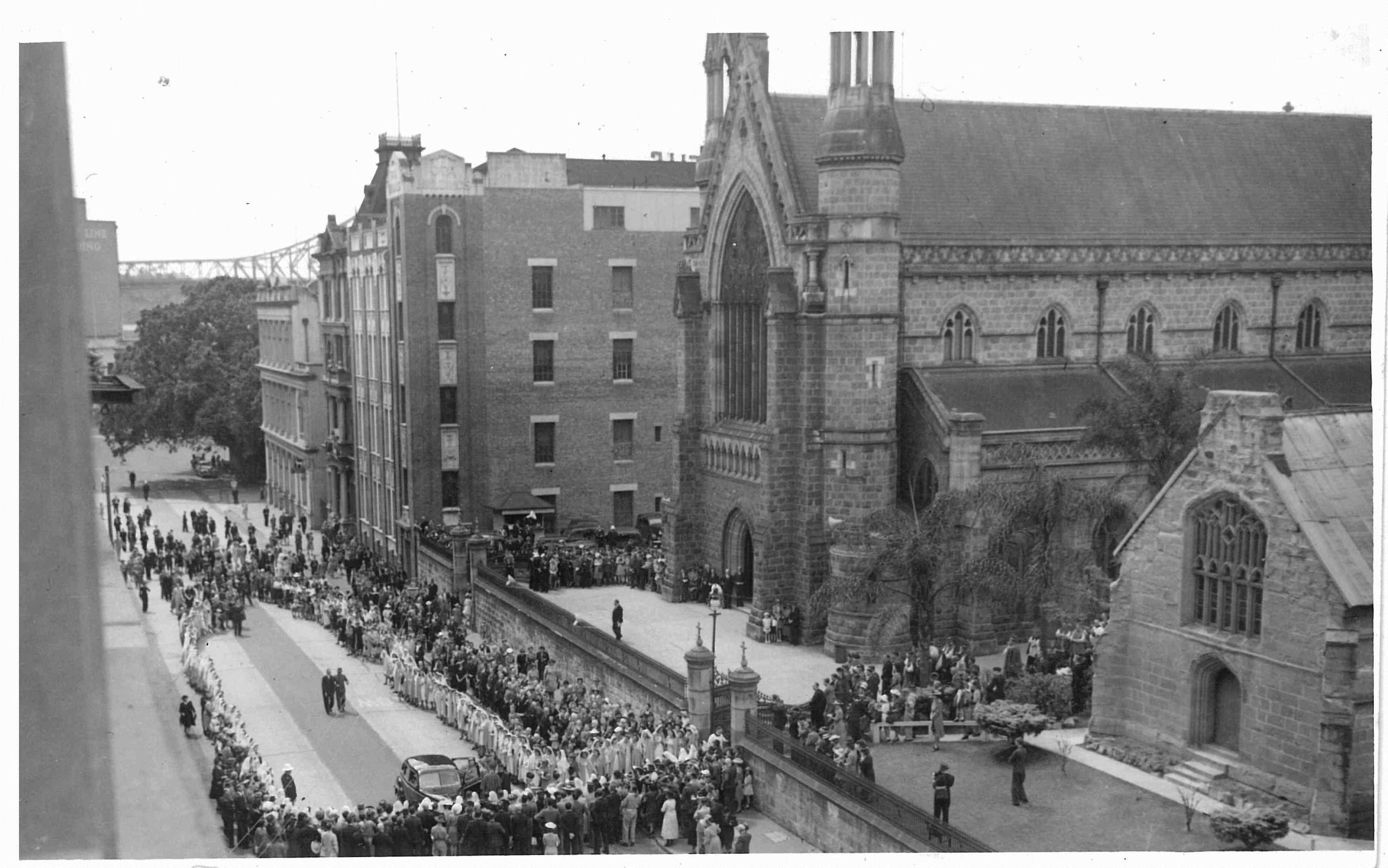God’s people celebrated the first Mass in Brisbane, said by Archbishop Polding, in May 1843 in a temporary chapel on Elizabeth Street. That same month, the Archbishop also celebrated Mass on Minjerribah (Stradbroke Island), where he was determined to establish a mission under the care of the Passionist Fathers. The Passionists endeavoured to get to know the language and culture of the local Indigenous community and in this they were allied to Archbishop Polding, who did not share in the prevailing prejudices. Yet unfortunately the loneliness and insecurity of the mission soon took its toll, and by 1847, the Passionist Fathers had reluctantly left. The Quandamooka people are still resident on and integral to the life of the island.
In 1859, the Diocese of Brisbane was established with the colony of Queensland, initially covering the entire state. The first Bishop, James Quinn, focused on immigration, bringing many Irish settlers and establishing a foundation for the Church that would last a century. Education played a crucial role in raising the social and economic status of Catholics.
Bishop Robert Dunne became Brisbane’s first Archbishop in 1887, promoting Catholic family settlements and a steady flow of Irish Catholics influenced the character of the church. Social outreach through hospitals and orphanages and education expanded. In 1912, Archbishop James Duhig took over. He is remembered for his leadership, building efforts, and integration of Catholics into the community. The 1929 creation of the Diocese of Toowoomba made the Archdiocese of Brisbane more manageable.
After World War II a wave of migrants brought diverse cultures to the archdiocese. In 1949 Bishop Patrick Mary O’Donnell, as coadjutor, attended the Vatican II Council. When he became Archbishop after the death of Archbishop Duhig in 1965, he began the implementation of changes in the Church. Although an Irishman of the old school, Archbishop O’Donnell found ways of introducing the new liturgy and the new diocesan agencies and a new Church appeared.
In 1973 Francis Roberts Rush, Bishop of Rockhampton, came to Brisbane as Archbishop. He was thoroughly a man of the Vatican II Council. His insistent message to clergy and laity, especially the latter, was that they were the Church. It was a time of falling numbers of vocations and of the departure of priests and religious. Archbishop Rush’s emphasis on the laity brought about a new Church in which pastoral councils began and flourished and the involvement of the laity in the liturgy inspired spiritual and pastoral renewal. Under his leadership, Brisbane saw its first archdiocesan assembly and the growth of Catholic Social Response (now Centacare).
Archbishop John Bathersby, who became Archbishop in 1991, focused on spirituality, social justice and evangelisation. He was passionate about the attractiveness of the Christian vision and power of Christ to transform people and the world into a civilisation of love. Thus, he promoted evangelisation as Christian engagement with the world, particularly the world of young people. He led the archdiocese into the new millennium, culminating in the Synod and its vision of Jesus, Communion, and mission. In later years Archbishop Bathersby focussed his energy on renewal of the archdiocese through prayer campaigns, outreach to young people particularly through events associated with World Youth Day, and calling all Catholics back to prayer and participation in worship with local parish communities. He blessed and opened the Santa Teresa Spirituality Centre in October 2009 and presided over the construction of the Holy Spirit Provincial Seminary, which was opened by Cardinal Levada, in April 2008.
Archbishop Mark Coleridge, who was appointed Archbishop of Brisbane in 2012, brought a strong commitment to Scripture, evangelisation and pastoral renewal. With a background as a Scripture scholar and years of service in Rome, he placed great emphasis on listening to the Word of God and discerning the signs of the times in the Church and society. Archbishop Coleridge guided the archdiocese into a new era of missionary discipleship, encouraging a faith that engages with contemporary challenges through openness, dialogue and action rooted in Christ. He played a significant role in preparing the Church in Australia for the historic Plenary Council, emphasising the themes of synodality, inclusion and renewal. Nationally, he served as President of the Australian Catholic Bishops Conference. Throughout his ministry, Archbishop Coleridge highlighted the importance of forming communities that bear credible witness to the Gospel, while fostering engagement with young people, deepening prayer and strengthening local parishes as living centres of faith.
In 2025, Archbishop Shane Mackinlay was appointed to lead the archdiocese.
